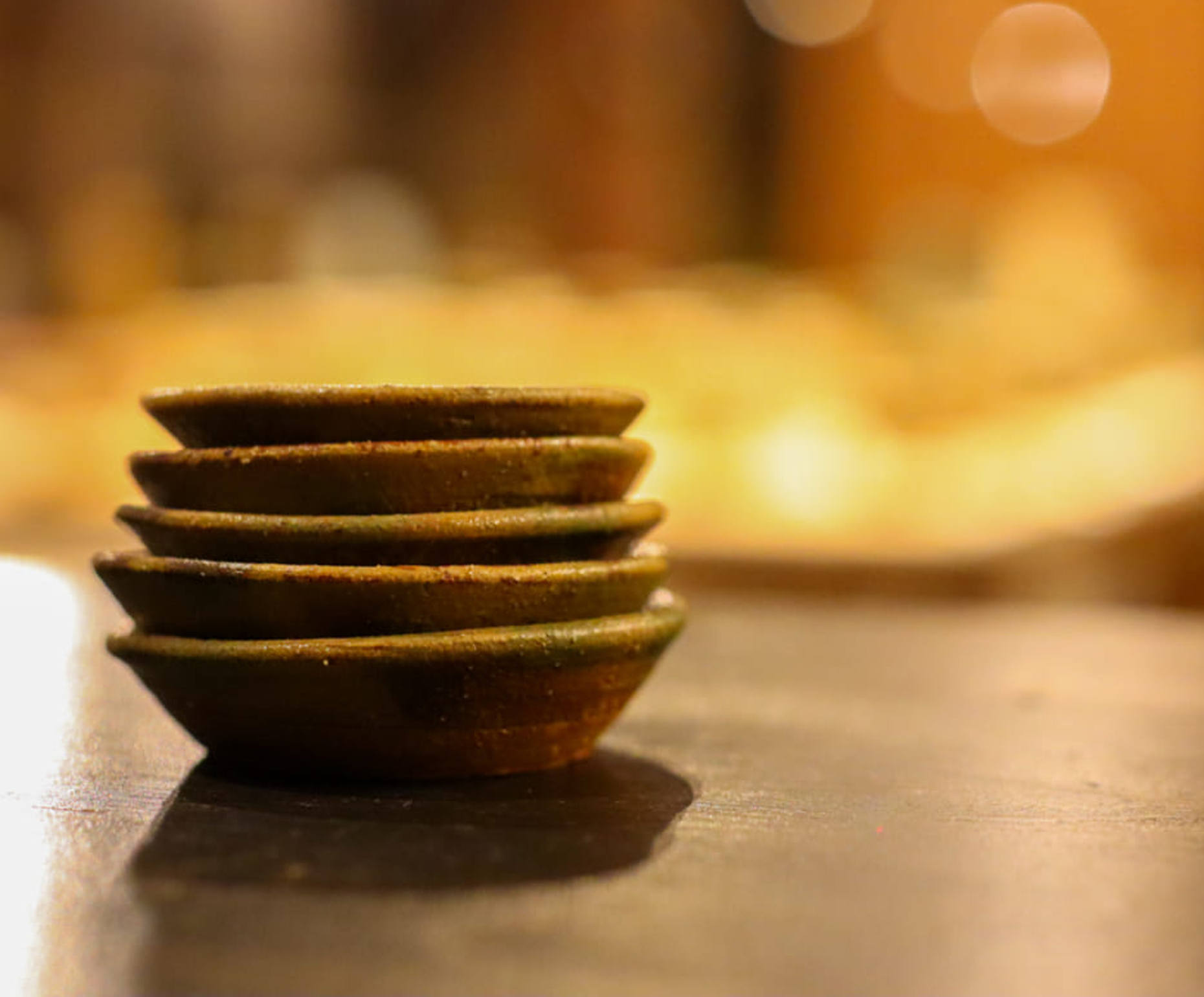
Characteristics and handling of the vessel
Characteristics of tableware and inspection standards
All products sold in our store are inspected upon arrival.
However, most of the ceramics we carry are handmade, so each piece has its own unique character.
Please understand and acknowledge the characteristics of ceramics and our inspection standards below before making a purchase.
Crazing
This refers to the fine cracks that appear in the glaze of ceramics. These patterns are created by the difference in the degree of shrinkage between the clay and the glaze when cooling after firing. As they are not fissures like cracks, liquids will not penetrate into the clay. Please enjoy them as one of the unique features of the piece.
pinhole
Air or organic matter remaining in the clay during bisque firing may remain as small holes during firing.
We inspect the pieces when they arrive at our store, but small pinholes that do not cause any problems when using the piece are considered to be in good condition as they reflect the character of the piece.
iron powder
When pottery is fired, the iron originally contained in the clay oxidizes and may appear as black dots on the surface. As there are many artists and kilns that use iron powder to create a unique look for their pottery, we generally treat these as good quality items.
Uneven glaze
The glaze is applied by hand to each piece. As a result, the thickness may not be uniform. Since unevenness in the glaze has long been appreciated as part of the vessel's scenery, we generally treat these items as good quality.
Faded or blurred painting
Most of the pieces we carry are carefully hand-painted by our potters. The finished product will vary depending on the thickness of the paint, the temperature and climate during firing, etc., so we generally treat them as good quality items.
Molding distortion
Many of our pottery pieces are made on a potter's wheel, by hand, or by molding. Because they are all made by hand using traditional methods, they are often not perfectly symmetrical, have different heights, and have individual characteristics. We see these as an expression of the pottery, and therefore generally treat them as quality products.
Rattling on the hill
Just like distortion in the molding process, there are individual differences in the height and thickness of the base. Anything that is significantly wobbly during inspection is deemed a defective product, but anything that is slightly wobbly is considered a good product. If you are concerned about the wobbling, you can use a whetstone or sandpaper to grind down the base to make the vessel more stable.
Cracks and chips
Cracks and chips that may affect the quality of the product are treated as defective items upon arrival. However, cracks and chips that are considered to be part of the expression of the pottery and that do not appear to affect the quality or strength of the product are treated as non-defective items.
Regarding handling of the equipment
Changes with use
Pottery is absorbent, and the glaze has fine cracks called crazing. Before use, soak the vessel in hot water for a sufficient amount of time to absorb the water, which will help prevent tea stains and other stains. Enjoy the changing appearance that is unique to pottery.
Dishwasher use
Tableware can be broadly divided into pottery and porcelain, and there are more porcelain items that can be used than pottery.
You can also use ceramics, but there is a concern that they may deteriorate more easily than if washed by hand.
Use of microwave oven
Many of the works can be used, but we do not recommend doing so as it may cause damage.
Also, items decorated with gold leaf cannot be used.
Using the oven
You can use items that are labeled as heat resistant, but generally they cannot be used.
If you have any questions or concerns,
Please contact us using the form below.

